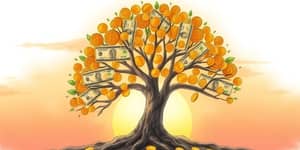
Exchange-traded funds (ETFs) have revolutionized how individuals approach building their investment portfolios. With a combination of transparency, diversification, and affordability, ETFs offer a compelling gateway to broad market participation without the complexities and high costs often associated with active management. This article explores how investors of all levels can harness the power of passive ETFs to pursue long-term growth and stability.
At their core, ETFs are baskets of securities—stocks, bonds, commodities, or other assets—designed to track the performance of an underlying index. Unlike actively managed funds, which rely on portfolio managers to select securities, passive ETFs mirror well-known benchmarks such as the S&P 500 or the Total Stock Market Index. This structure drives down management expenses dramatically, making it possible for investors to benefit from low expense ratios under 0.20% year after year.
Another key advantage is liquidity. Major ETFs trade with tight bid-ask spreads further cutting costs for buyers and sellers. High trading volumes in leading funds limit transaction costs and make it easier to enter or exit positions at fair prices. Moreover, the transparent holdings of passive ETFs enable investors to see exactly what they own, reinforcing trust and alignment with long-term objectives.
Over the past decade, the global ETF market has expanded from a niche product to a mainstream investment vehicle. As of February 2025, total assets under management reached an unprecedented USD 15.5 trillion, with the U.S. ETF market alone accounting for USD 10.43 trillion. This surge reflects how ETFs have created a microcosm of global market opportunities for individual investors who once faced steep barriers to entry.
Retail and institutional investors alike are drawn by the combination of cost efficiency and ease of access. Net inflows across regions in Q1 2025 were led by North America (+$331.3 billion), Europe (+$91.6 billion), and Asia-Pacific (+$38.2 billion). The ability to purchase a diversified basket of securities in a single trade has fundamentally altered portfolio construction approaches, allowing everyday savers to participate in economic growth worldwide.
Investors can choose from a diverse array of ETF categories, each designed to fulfill specific roles within a balanced portfolio. Understanding how these vehicles align with different market segments is crucial for optimizing risk and return.
These funds provide diversified exposure to broad asset classes with the click of a mouse, enabling investors to construct balanced portfolios that reflect personal risk tolerance and return objectives.
Choosing an ETF isn’t just a matter of ticking the lowest fee box. A holistic evaluation ensures alignment with your financial goals, tax situation, and trading preferences. Look for funds with a track record of tight tracking and robust liquidity to facilitate smooth transactions.
By focusing on these factors, investors can filter out ETFs that might cut corners on tracking accuracy or impose hidden costs despite a low headline fee.
For decades, mutual funds were the dominant packaged investment product. ETFs have carved out a significant share by addressing many of the limitations of mutual funds, particularly in cost and tax treatment. Understanding these distinctions can sharpen your investment decision-making.
ETFs offer transparent cost-efficient index tracking along with the flexibility to manage portfolios intraday, while mutual funds can involve higher minimum investments and slower trade processing.
The ETF landscape continues to evolve. Active ETFs have grown at a 40.4% CAGR over the past decade, surpassing $1.26 trillion in AUM globally. Innovations spurred by regulatory updates like the SEC’s Rule 6c-11 have paved the way for niche strategies, smart beta, and sector-specific ETFs, though pure index trackers remain the bedrock for cost-sensitive investors.
Market flows demonstrate shifting priorities: during times of equity turbulence, investors have rotated into bond and alternative ETFs. Emerging markets in Asia, such as Taiwan, saw ETF AUM rise by 65% in 2024, illustrating the global appetite. As liquidity, product diversity, and technological access deepen, ETFs will only become more integral to modern portfolio design.
ETFs have fundamentally transformed the investment landscape, delivering institutional-grade market access to everyday investors at a fraction of traditional costs. By understanding the mechanics of low-cost, passive ETFs—and by rigorously evaluating expense ratios, tracking accuracy, liquidity, and tax considerations—you can build a resilient and efficient portfolio tailored to your goals.
Whether you’re a novice charting your first foray into markets or an experienced investor seeking cost optimization, ETFs offer a powerful toolkit. Dive into the data, explore the options, and take advantage of these dynamic instruments to harness the full potential of global markets.
References













